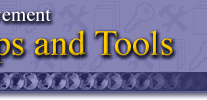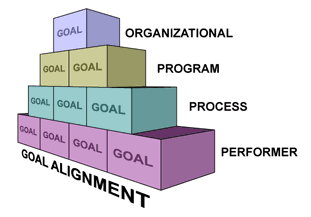 |
||||
|
||||
|
|
 |
What should the organization, systems, processes look like (think in terms of "what is possible")? This is an opportunity to use your experience and guide the discussion. As an outsider to the situation, it will be important for you to help the client see 'the whole picture'. Don't limit yourself too soon — a great deal might be possible if you have the backing and cooperation of key stakeholders. At the very least, this step will allow you to discuss issues such as alignment of objectives and performance indicators with the client. Goal AlignmentLack of organizational goal alignment is one of the most common problems uncovered by the PI process — yet goal alignment is the most critical step for successful performance. Effective performance improvement begins with clear job expectations that support organizational goals. Otherwise, the organization may drift into chaos. Although theoretically this concept is easy to understand, goal alignment is less easy to accomplish and, in fact, rarely in place when the PI process begins.
So the first task is to become aware of the business or organizational goals you will support if you solve the performance problem you are facing. Each member of the organization must have a job description that contains clear and specific performance goals, the rationale behind each goal, and the indicators that will let the performer know when they are (or are not) achieving those goals. Questions you should ask yourself, and your stakeholders, include:
Note: Steps two and three can be reversed. |
||||||||||
